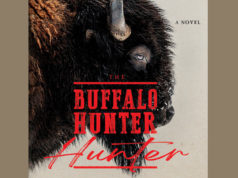While the title of Julie Kibler’s historical fiction novel Home for Erring and Outcast Girls doesn’t exactly roll off the tongue, it’s at least shorter than the name of the place on which it’s based: the Berachah Industrial Home for the Redemption of Erring Girls, a religious group home for women founded in Arlington in the early part of the last century that serves as the novel’s primary setting. The book is a follow-up to the Arlington-based author’s debut novel, Calling Me Home, which was a Target Club and Ladies Home Journal Book Club pick when it was published several years ago.
The Berachah Home was a real place whose remnants are located on what is now the University of Texas-Arlington’s campus. In turn-of-the-20th-century Texas, the home opened its doors to allow women who had been cast out by society to recover without separating them from their children, when separating was a common practice at the time. As the book lays out in increasing detail throughout the narrative, it didn’t take much for a woman to “err” in the eyes of society back then. While some women in the home were prostitutes, many were jilted by a man they thought had loved her, left to raise children they hadn’t necessarily wanted all on their own.
Kibler’s compelling work tells the story through the eyes of three women: Lizzie and Mattie, two real people who lived at the home and whose stories span into the 1930s, and Cate, a present-day librarian who discovers the cemetery and archives of the home when she moves to Arlington. It is through Cate that we learn the stories of Lizzie and Mattie. Cate also represents the author in her research. Kibler pored over newsletters published by the home and correspondence by and interviews with women who lived there. Fictional Cate also discovers many parallels between her life and the lives of the women she’s researching. As she learns of the trials of Lizzie and Mattie, who were both single women with children, she is forced to confront her own painful past, and the reader discovers that Cate may have more in common with the women than first thought.
In striking detail, Kibler transports us to Arlington, as well as Fort Worth, as they were over 100 years ago. It was “where civilization met the Wild West,” she writes of our fair city. “Pinstriped bankers walked the boardwalks beside cattle drivers with dung still clinging to their spurs.”
Though the book is set mainly in Arlington, there are allusions to well-known Fort Worth history throughout, as when Kibler describes “Hell’s Half Acre, where outlaws roamed for years and where women lived when they turned to prostitution.” Lizzie and Mattie attempt to rise out of their sordid environs, having grown up abused, sexually and otherwise, by their families and lovers, and failed by society in general. It’s clear through descriptions of the abuse befalling even minor characters that the early 1900s was not a good time to be a woman in Texas. (When is?)
At the home, Lizzie embraces the religious teachings there, while Mattie is appreciative but skeptical of the religious requirements of staying there. Still, Lizzie and Mattie become unlikely best friends. Cate feels a heavy connection to these two women. Cate has been failed by the institutions she trusted: her family and her church. While Cate is the least compelling of the three characters (the historical aspects of the novel are simply more engrossing), she is the link that shows us that we’ve made great strides in society yet still have a lot more work to do.
With such dark themes and depictions of sexual abuse throughout, some levity is welcomed. There is the requisite jab at that state to our north when Mattie tries beer for the first time, thinking to herself, “Better than Oklahoma water for sure.” And the character Lizzie is full of wit, serving as comic relief throughout the novel.
Kibler’s work paints a beautiful and horrible picture of our past while framing it around the continuing strife American women face to this day. As with any good historical fiction, it made me want to learn more about the real Home for Erring Girls, drawing me into the rabbit hole of Wikipedia and Google as I read. It doesn’t necessarily end happily for everyone involved, but Kibler says it best through Lizzie: “Everyone might be worth saving, but not everyone can be saved.”
Home for Erring and Outcast Girls,
by Julie Kibler
Crown (a division of Penguin Random House)
368 pgs.












